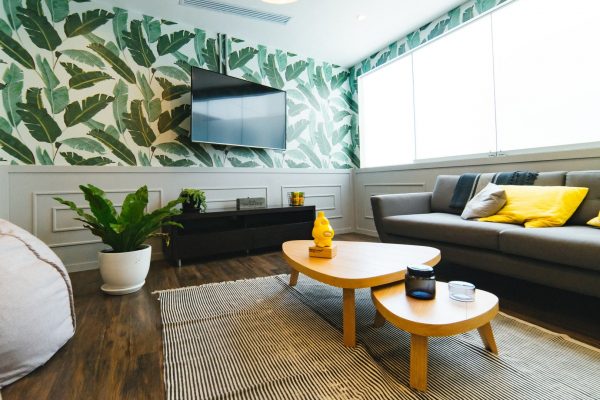Smart Tree‑Friendly Fence Installation in Depot Bench
Depot Bench homeowners value privacy, shade, and clean lines—and many yards include mature trees or back to the Boise Canal. Fence installation in Depot Bench stays root-friendly when tree health and site specifics guide the plan. This article provides city homeowners with practical tips, along with specific information for those with canal-front property.
How roots behave around neighborhood fences
Tree roots spread far beyond the trunk, typically reaching near the edge of the canopy. Most feeder roots are shallow, where air and water are available. Cuts, compaction, or grade changes in this zone can reduce water uptake and invite disease. In older parts of Depot Bench, long‑established plantings often hug property lines, which means post placement and digging technique matter more than the fence style itself.
Pre‑work planning for fence installation in Depot Bench
- Map the site: Mark the tree’s drip line, irrigation runs, utilities, and any visible surface roots. Sketch post locations and measure offsets before ordering materials.
- Choose flexible layouts: Consider stepping sections or shifting a line by 6–12 inches to avoid major roots. A small field adjustment now prevents expensive arborist work later.
- Select lighter equipment: Hand digging and low‑impact augers reduce soil compaction. Keep vehicles and materials off root zones.
- Protect the soil: Lay down plywood walkways if foot traffic is heavy. Avoid piling gravel or soil over roots; it suffocates feeder roots.
- The time the work is done: Spring through early fall generally supports recovery. In hot, dry spells, add a watering plan after installation.
Post placement techniques that avoid root damage
- Probe before you dig: Use a narrow probe or hand trowel in each post spot to feel for roots. Shift a few inches if resistance is strong.
- Hand‑dig critical holes: Where roots are dense, shovel and mattock work beats powered augers. If a large root is exposed and must be cut, make a clean cut and immediately backfill.
- Use smaller footings where allowed: Narrower, deeper footings reduce the footprint in root zones while providing stability. Verify local code and engineering limits before downsizing.
- Consider brackets and surface mounts: On decks, retaining edges, or hardscape, post bases and brackets can reduce excavation. Only apply to structures designed for the load.
- Keep concrete minimal and tidy: Overfilling with concrete can block water and air around roots. Bell‑shaped holes are unnecessary in most backyard conditions; a consistent, tight pour is better.
Material choices that work with trees
- Wood: Readily adjustable on site and easy to notch around minor obstructions. Cedar performs well, but all wood still needs clearance from trunks and roots to avoid contact and rot.
- Vinyl: Clean look and low maintenance, but panels require alignment. Use adjustable brackets or allow for slight layout shifts to clear roots.
- Metal: Steel or aluminum panel systems install well with precise posts. Panel widths can be mixed to work around obstacles.
- Semi‑private designs: Permeable styles reduce wind load and stress on posts in root‑compromised soils.
Special guidance for canal‑adjacent lots
- Confirm easements: Canal banks and maintenance corridors often carry access rights. Review the survey and lot documents before setting the line and height.
- Respect bank stability: Avoid excavation at the top edge of the canal bank. Keep post centers set back where soils are less likely to slump.
- Control runoff: Fresh concrete washout and soil spoils should never enter the canal. Stage mixing areas upslope and contain rinse water.
- Choose moisture‑tolerant materials: Galvanized hardware, powder‑coated metals, and treated posts limit corrosion and rot in damp microclimates.
- Ann Morrison Park: Homeowners just north of the Depot Bench line often reference weekend traffic and winds off the river; permeable fence styles can help reduce gust stress without sacrificing privacy.
- Vista Avenue: Lots near this busy corridor benefit from sound‑dampening plant layers paired with semi‑private panels, which are easier on roots than full‑height solid walls packed tight to trunks.
- Crescent Rim Drive: On slopes with views, stepped panels and careful post spacing avoid large roots while keeping sightlines clean.
Watering and aftercare to help trees recover
- Deep, infrequent watering: One slow soak out to the drip line helps roots rebound after nearby digging. Avoid daily, shallow watering.
- Mulch ring: Two to three inches of mulch outside the drip line conserves moisture and buffers soil temperature. Keep mulch off the trunk.
- Watch the canopy: Flag any sudden yellowing, early leaf drop, deadwood, or mushrooms at the base. These can signal stress or root issues.
What to do if roots are encountered
- Small roots: Tunnel under with a hand trowel, then backfill gently. Minor hairline roots typically recover if not crushed.
- Medium roots: Shift the post hole several inches. If a cut is unavoidable, make a clean, single cut and backfill immediately.
- Large structural roots: Do not cut. Reroute the fence line or shorten a panel to bridge around the root. Structure and stability depend on these roots.
Where professionals fit into the process
Mid‑project surprises are common with mature trees: buried irrigation, shallow roots, and tight side yards. An experienced installer can suggest layout adjustments, non‑standard brackets, or alternates like staggered panels. Arborists provide guidance when root pruning is unavoidable or when high‑value trees show stress. In Depot Bench, experienced crews are familiar with small‑lot access, alley constraints, and older soils that don’t behave like new subdivisions. Equinox Fencing is experienced with tree‑friendly fence installation on Depot Bench lots, including adjustments for root zones and canal‑side properties.
A note on codes and neighbors
- Visibility and setbacks: Corner lots and alleys may have added sightline limits. Check local guidance before setting height.
- Drainage: Fences should not block drainage paths between properties. Grade to direct water away from trunks and foundations.
- Neighbor alignment: Good‑neighbor styles, shared surveys, and a quick chat about lines go a long way on streets where homes sit close together.
Quick checklist before calling a crew
- Mark the drip line and planned post centers.
- Identify roots and irrigation within a shovel’s depth.
- Sketch alternate post locations or panel sizes.
- Confirm easements if the yard backs to the canal.
- Plan watering and mulch for the first month after installation.
Closing thoughts for Depot Bench homeowners
Tree health and fence function can live together on Depot Bench’s older lots. The best results come from small adjustments: a shifted post, a hand‑dug hole, or a panel that steps around a root. With thoughtful planning, residents keep shade, privacy, and the character that makes this Boise neighborhood feel like home.














